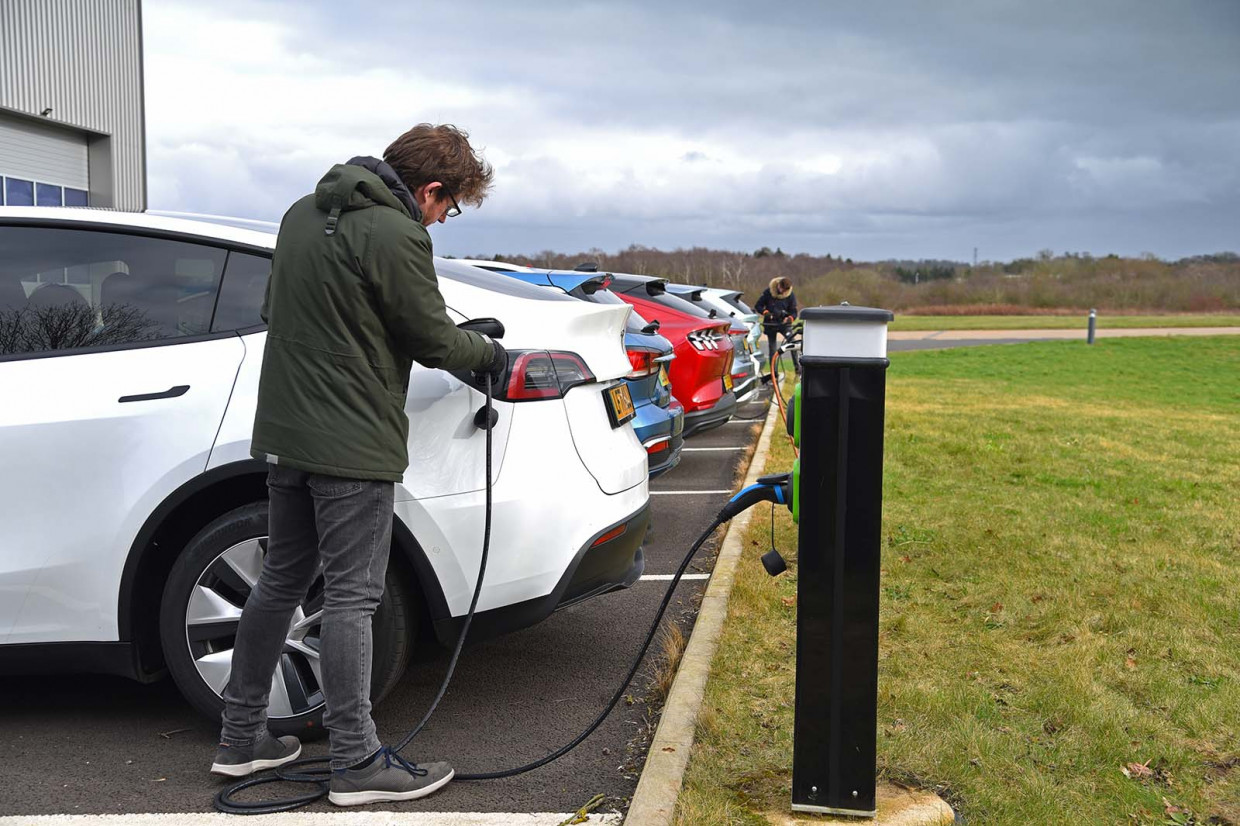
If you’ve ever had a conversation about electric cars, the phrase ‘range anxiety’ has likely come up. In 2022, it’s a bit of a misnomer: the issue these days isn’t really the range of electric cars, but whether you’ll be able to charge them. Call it ‘charging anxiety’.
Still, some people still have a vision of electric cars as things that run out of energy all the time. The truth is they really don’t. In fact, much like most drivers of petrol or diesel cars have never run out of fuel, most EV owners probably haven’t run out of electricity while behind the wheel – and probably never will.
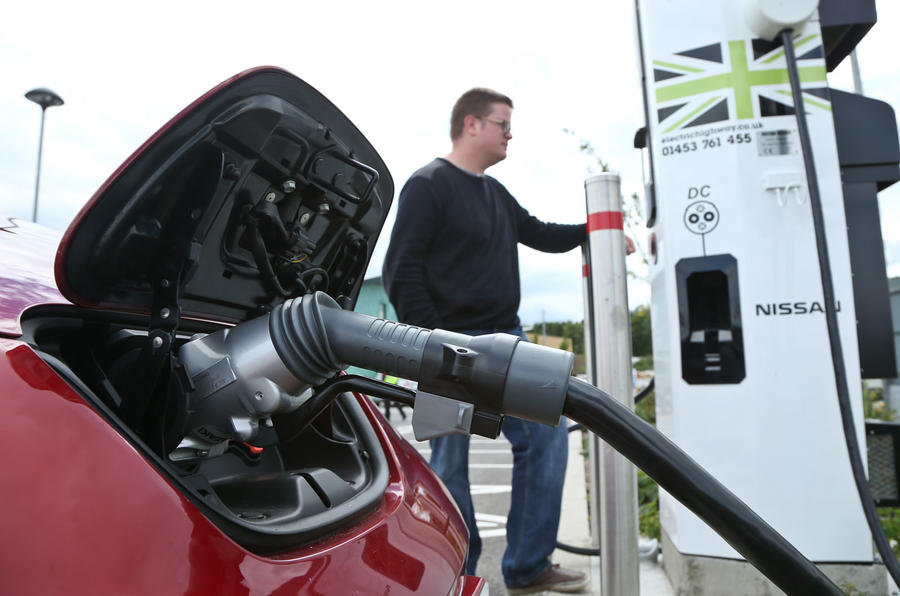
Which raises a question… what actually happens when you run out of electricity? Does the car just shudder and turn itself off like an iPhone? Do all the displays fade and the whole thing slows down, like a digital watch?
In truth, it’s not really that dramatic. In fact, running out of fuel in an electric car is similar to doing so in a combustion-engined car, with all sorts of warnings flashing up on the driver display as the car does its very level best to stop you doing something daft.
So what actually happens when an electric car hits 0% charge. Does the car give the driver enough warning to stop before the battery dies?
We recently partnered with sister brand What Car? to conduct a winter real-world electric car range test, driving 10 electric cars until they literally ran out of power to discover their true winter range. So we got to experience what happens when an EV actually runs out of power.
Revealed: how winter weather affects real world range

The real-world test was conducted on a closed vehicle proving ground, on a 15-mile route consisting of 2.6 miles of simulated stop-start urban traffic, four miles of steady 50mph driving and eight miles of driving at motorway speeds of 70mph.
New electric cars for 2022 and beyond: what's coming when
This is what happened when each car ran out of charge, and what to expect if you ever find yourself in such a situation. Which, given the abilities of electric cars and fast-growing charging infrastructure, isn’t likely to happen…
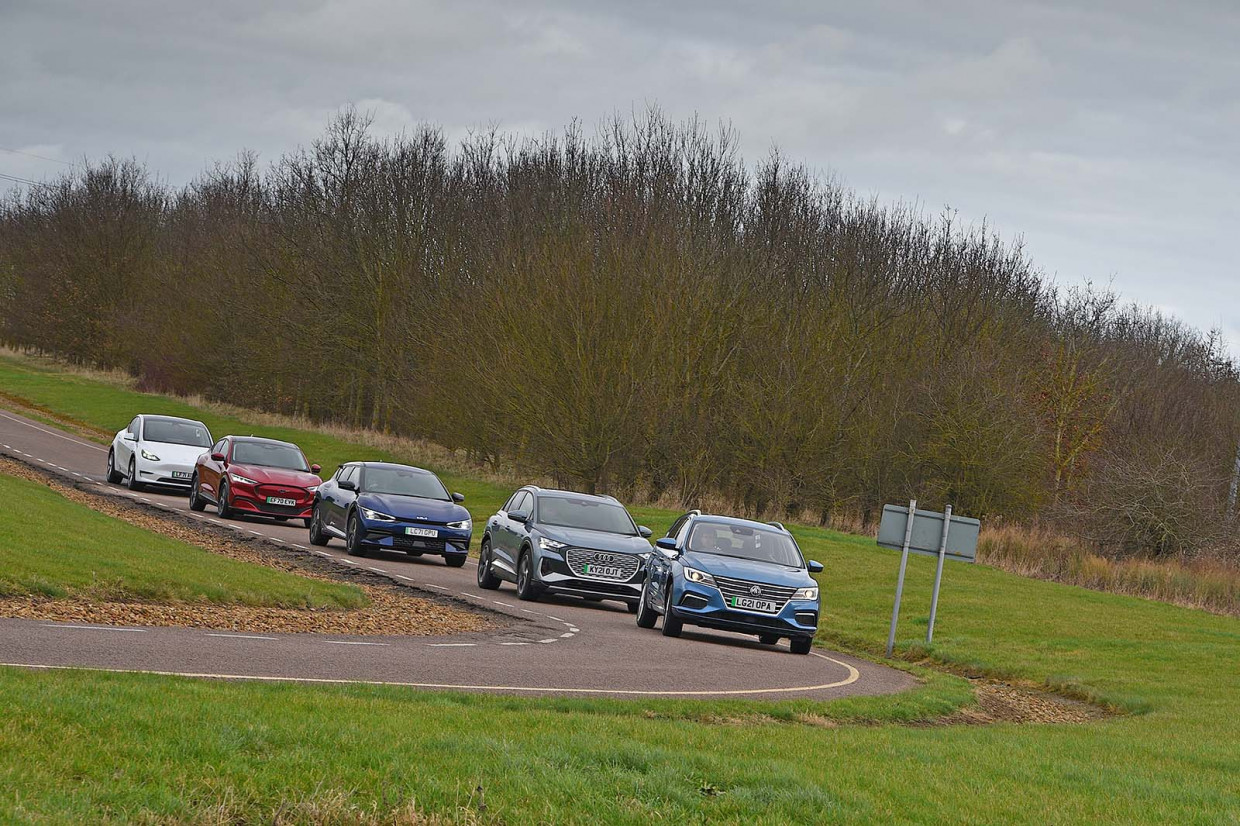

When the Audi hit 0% charge the speed remained constant and the cars was able to accelerate, although it was more challenging to gain speed. There were a number of warnings on the digital driver display telling you to stop and charge, with one message stating that performance was limited.
The Q4 was able to travel a reasonable distance before the throttle became unresponsive and the car slowed to a safe stop. The power steering was still functional and back-up power supply meant the digital screens and lights remained on to help you stop safely.
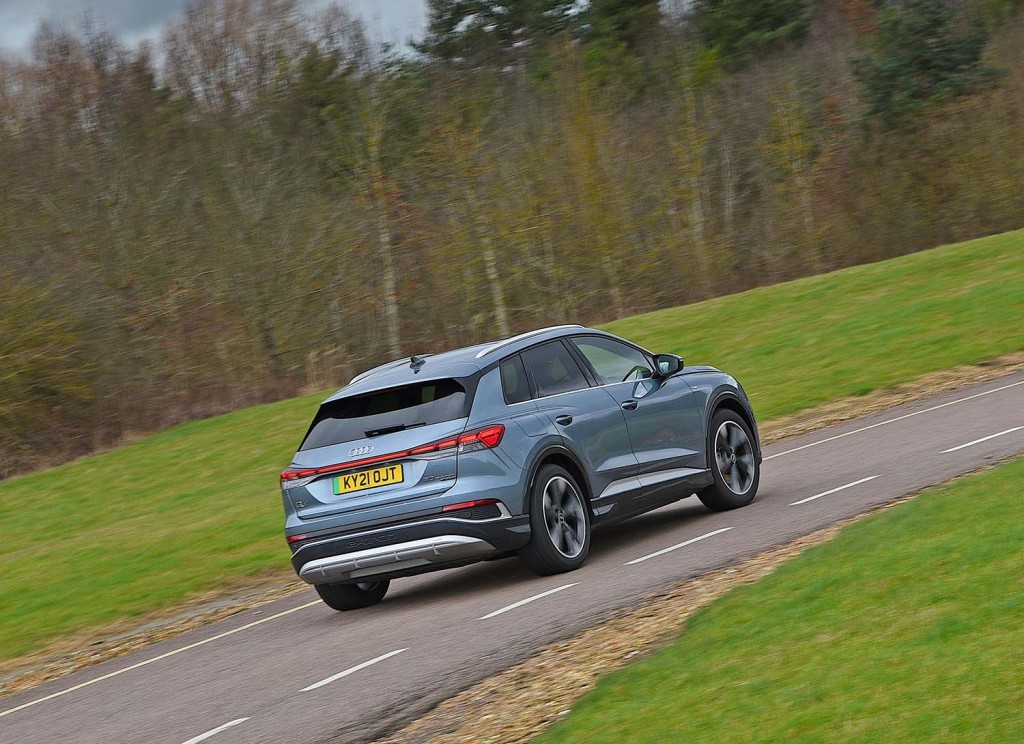
BMW iX3
After indicating zero miles of range the iX3 was able to maintain a high speed could even reach achieve 70mph, although power inputs were heavily reduced. Thankfully the car gave plenty of warning and once the battery was fully depleted the car rolled to an undramatic standstill.
All systems and power systems worked once the car stopped.
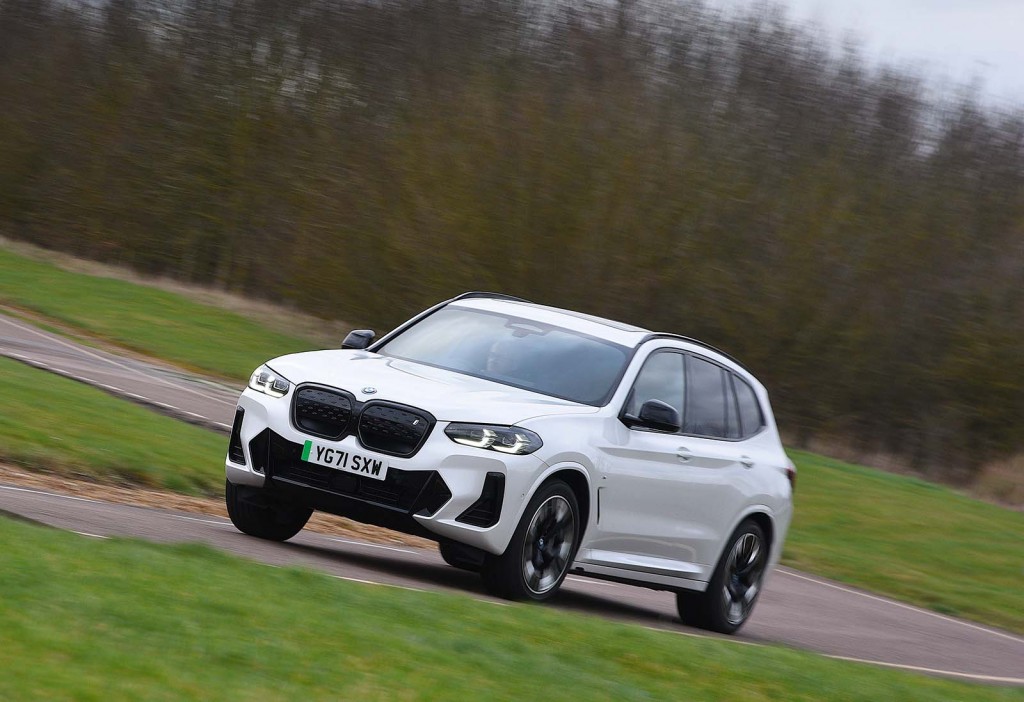
The air conditioning shut off when the range in the 500 dropped to zero, but the car managed to soldier on for around half-a-mile at a reduced speed.
Warnings to stop were clearly displayed, although the car did come to a more abrupt halt than others, meaning there wasn’t much time to move the car off to a safer position. The car would no longer engage drive and had to be winched when being recovered from the proving ground circuit.
Like most of the electric cars involved in the test, the Mach E displayed a number of messages to stop and charge.
Once 0% was displayed, the car managed a whole loop of the 15-mile test circuit at varying speeds but when it was about to go for another run the car was unresponsive. Power steering was unoperational, although some systems remained.
Power was restricted when the EV6 battery ran out of charge, but the car did hold a steady speed and was able to travel at around 60mph for a mile or two after displaying 0%. The Kia slowed down incrementally and around 20mph started to bring itself to a stop, losing power steering as it did so.
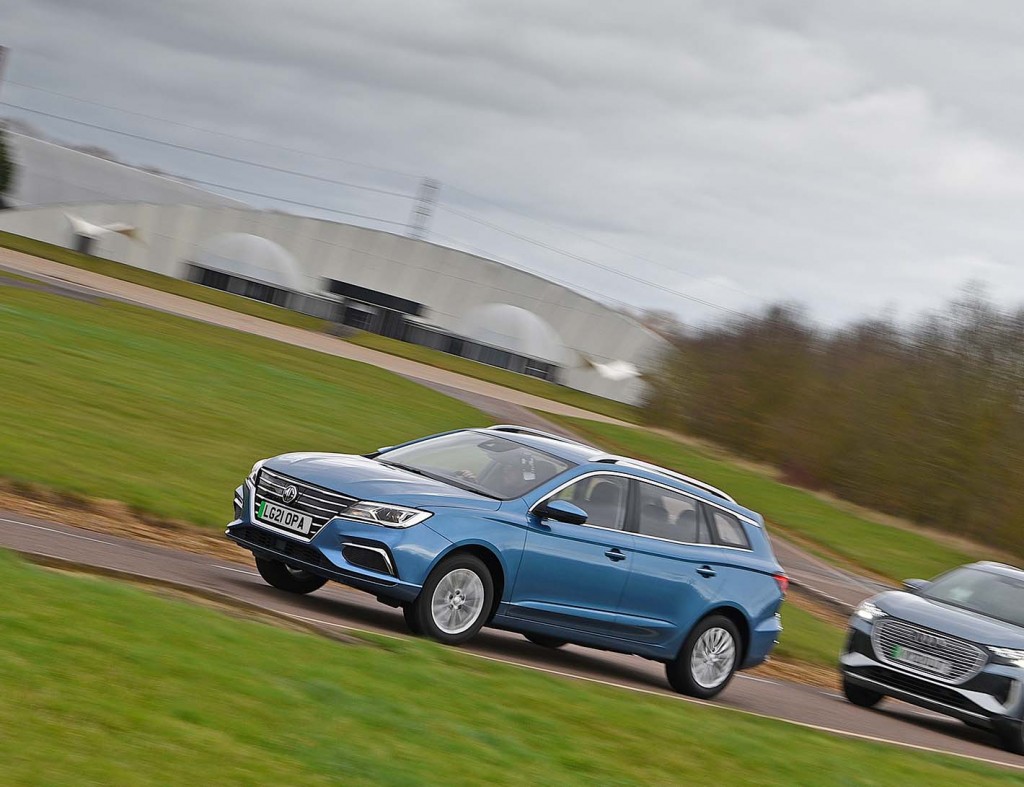
MG 5
Once the MG 5 reached zero miles of range it was able to keep going, but the top speed was capped at 50mph. The car was able to continue travelling for a surprisingly long time, well after the range indicator had disappeared.
When the MG’s battery was fully depleted a red message appeared on the dash, with the car becoming unresponsive and slowed down gradually to a safe stop. The power steering was unoperational, but the ancillary electrics still worked.
The Taycan provides more than enough warning even before it hits 0% charge, with a large red notification reminding you to stop and charge the car. After showing no charge the car became more sluggish and a small tortoise symbol appeared on the driver display showing that the car had limited power, although the speed was not limited.
After a few more miles the Taycan began to decelerate and did not respond to any throttle input. It slowly dropped its speed allowing for plenty of time to pull over. Power steering remained as did the digital driver display and headlights.
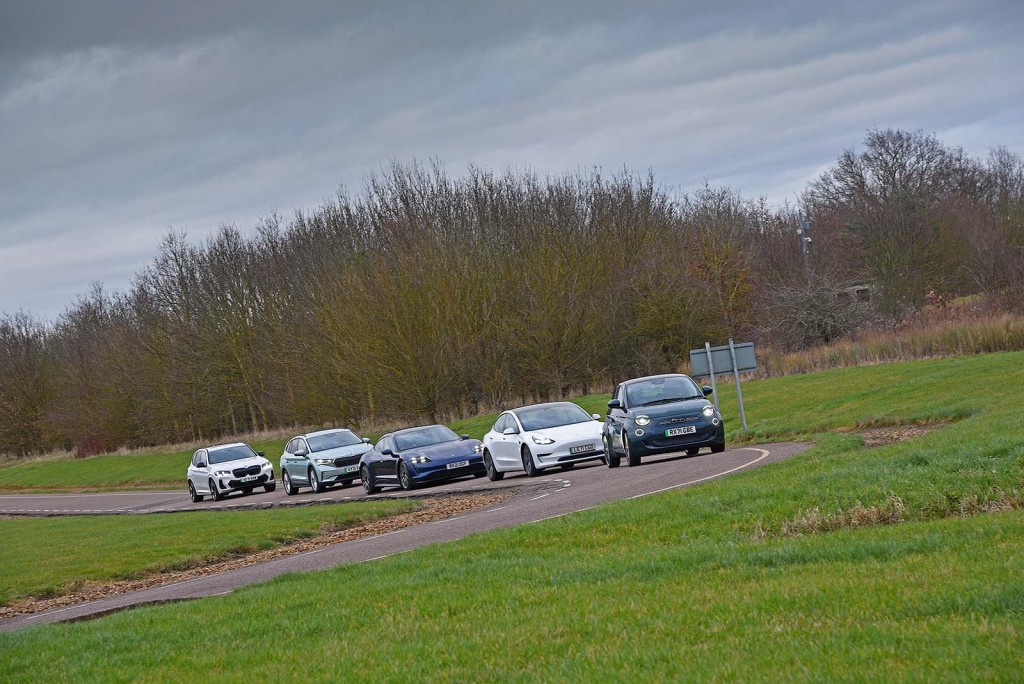
A myriad of warnings and notifications popped up when the Enyaq reached 0%, but the car was still able to maintain its speed and could achieve 70mph. After a short while the Enyaq’s top speed dropped to 50mph before the car finally gave up its pursuit and rolled to a halt safely.
Electrically assisted systems such as the power systems were still operational making it easier to recover.
In the Tesla Model 3 a number of on-screen warnings pop up to urge you to stop and charge. There was a clear reduction in performance and speed with further audible warnings to stop.
As a last ditch attempt to urge the driver to take action, the infotainment screen started to flash red before the car eventually lost power and rolled to a halt.
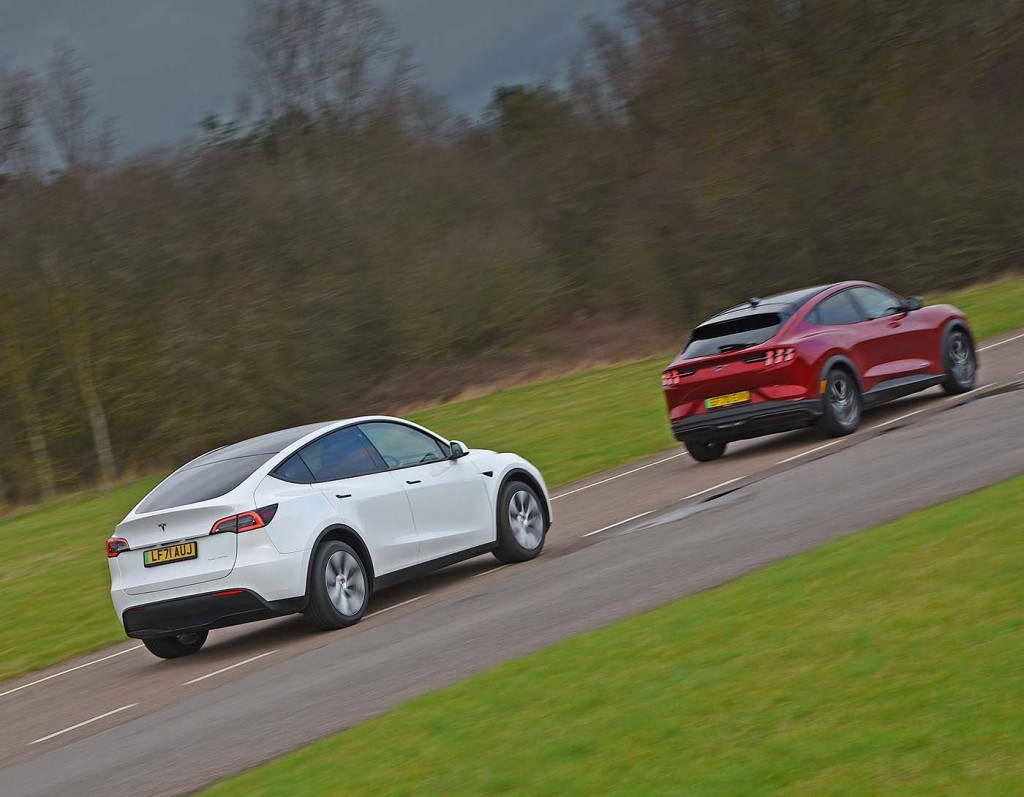
Like its smaller sibling, the Model Y flagged up a number of warnings to stop on the infotainment screen but was still able to climb to 70mph despite showing 0% charge. The car then reduced speed and the headlights switched off.
The Model Y is fitted with a ‘towing mode’ which allows the car to be moved when the battery is flat, although power steering is lost making it harder to manoeuvre.
How to avoid running out of charge in an EV
The takeaway from this exercise is that electric cars will give you ample warnings that they’re losing power, giving you the opportunity to take action to avoid slowing to a halt. Models that maintained some power to the car once the batteries were out of charge arguably performed better as key components such as the power steering remained operational, making them far easier to recover.
Of course, the best advice is not to run out of charge in the first place. So here's some helpful tips to prevent that.
When travelling a long distance it is best to plan ahead and pinpoint a number of places where you may be able to charge your car. If you’re planning a longer journey with limited charging opportunities use the car’s eco mode, and use the maximum level of regenerative braking if you have the option.
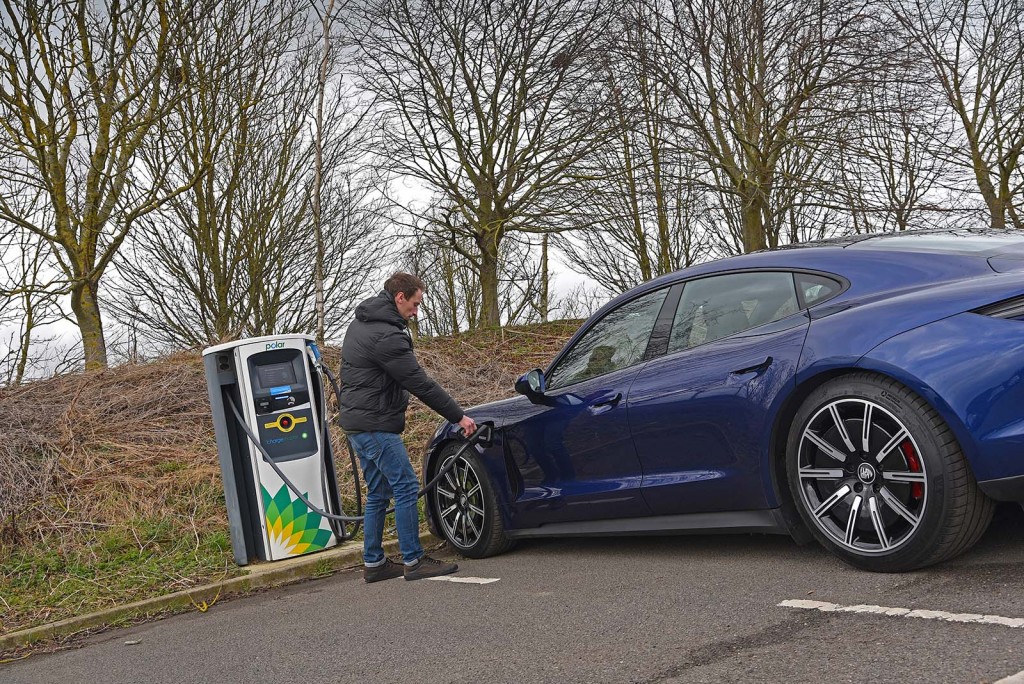
With a number of apps available displaying the location of electric charging points, planning a journey is an uncomplicated process and should help to avoid being stranded by the side of the road with a dead battery.
You can also extend the battery life by switching off systems within the car such as the heater and radio. Although only a simple task it can eek out a few more miles if you fear the onset of range anxiety. Weight is also an important factor, therefore by removing any unnecessary items can help to gain a few extra miles.

In the event you do run out of charge contact your recovery provider. Some now have small battery charging units in their service trucks that can give you a boost to get going again. If that isn’t an option, you may have to request a flatbed truck to collect your vehicle. Some electric cars cannot be towed due to their regenerative braking components.
READ MORE
Subscribe to the Move Electric newsletter
e-CARS
New Volkswagen ID Buzz: everything you need to know
How efficient are electric cars?
e-BIKES
Ducati expands e-bike range with first racing machine
e-MOTORBIKES
New Yamaha Neo is Europe-bound '50cc equivalent' electric moped
Electric Motion Epure Race e-motorbike review
e-SCOOTERS
Eskuta KS-450 e-scooter review
Taito unveils innovative new three-wheeled electric scooter
e-WORLD
Electric surfboard firm Awake aims to make waves with first e-foil
Volta Zero electric truck can 'dramatically improve' inner-city road safety

